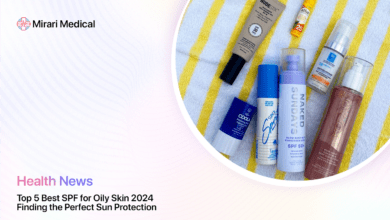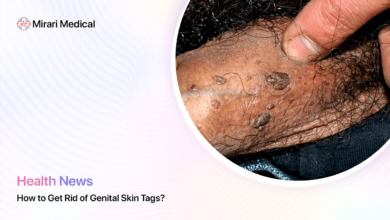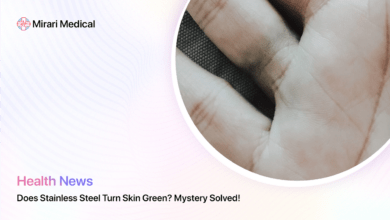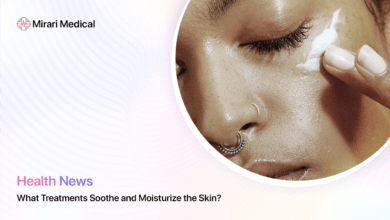How to Remove Anal Skin Tags?
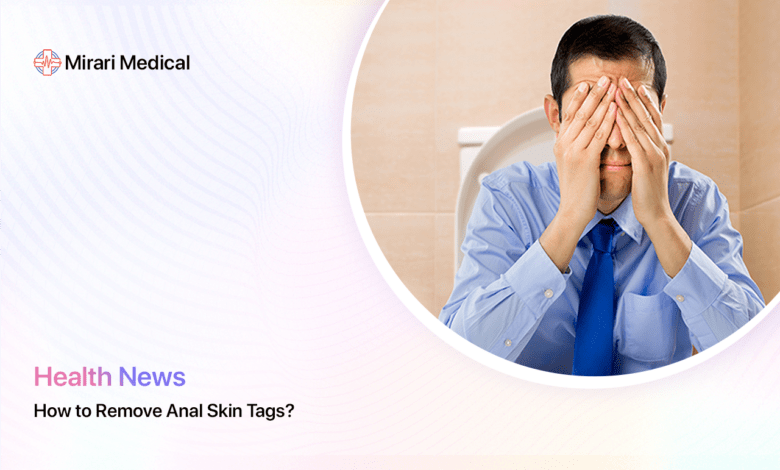
You may be interested
Anal skin tags are a common and often embarrassing problem that many people face. These small, soft growths of excess skin that hang off the anus or rectum can cause discomfort, itching, and hygiene issues. While they are typically benign (non-cancerous), anal skin tags can still be a source of concern and frustration for those who have them.
Surprisingly, it is estimated that up to 46% of people will develop an anal skin tag at some point in their lives. This means that if you are dealing with this issue, you are certainly not alone. The good news is that there are several safe and effective ways to remove anal skin tags and prevent them from recurring.
In this comprehensive guide, we will explore everything you need to know about anal skin tags, including what causes them, how to identify them, and most importantly, how to get rid of them. We will also discuss some practical tips for preventing anal skin tags from developing in the future.
Whether you are currently struggling with anal skin tags or simply want to be prepared in case you ever do, this article will provide you with the knowledge and tools you need to take control of your health and well-being. So let’s dive in and learn how to say goodbye to those pesky anal skin tags once and for all!
What are Anal Skin Tags?
Before we delve into the various methods for removing anal skin tags, it’s important to have a clear understanding of what they are and how they develop.
Anal skin tags are small, soft, flesh-colored growths that protrude from the skin around the anus. They are typically benign, meaning they are not cancerous, and they do not usually cause any serious health problems. However, they can be uncomfortable, itchy, and may make it difficult to maintain proper hygiene in the anal area.
Anal skin tags are essentially excess skin that has formed as a result of various factors, such as:
- Hemorrhoids: Swollen veins in the rectum or anus can stretch the skin, leading to skin tags when the hemorrhoid shrinks.
- Anal fissures: Small tears in the lining of the anus can cause inflammation and skin tags to form.
- Crohn’s disease: This inflammatory bowel disease can cause chronic diarrhea and constipation, which may contribute to skin tag development.
- Pregnancy: The increased pressure and hormonal changes during pregnancy can lead to hemorrhoids and skin tags.
- Obesity: Excess weight puts additional pressure on the anal area, increasing the risk of skin tags.
- Friction and irritation: Wearing tight clothing, excessive wiping, or prolonged sitting can irritate the anal area and cause skin tags to form.
It’s important to note that anal skin tags are not contagious and cannot be spread from person to person. They are also not typically painful unless they become irritated or inflamed.
If you suspect that you have an anal skin tag, it’s best to have it evaluated by a healthcare professional to rule out any other potential issues, such as anal warts or skin cancer. Your doctor can also advise you on the best course of treatment based on the size, location, and number of skin tags present.
Professional Removal Methods
While it may be tempting to try and remove anal skin tags at home, it’s important to resist this urge. Attempting to cut, tie off, or otherwise remove skin tags yourself can lead to pain, bleeding, and infection. The anal area is particularly sensitive and prone to complications, so it’s always best to leave the removal process to a trained medical professional.
There are several safe and effective methods that doctors use to remove anal skin tags in an office setting, including:
Surgical Excision
This is the most common method for removing anal skin tags. The doctor will numb the area with a local anesthetic and then use surgical scissors or a scalpel to carefully cut off the skin tag at its base. Depending on the size of the skin tag, the wound may require a stitch or two to close it and promote healing.
Electrocautery
With this method, the doctor uses a small probe to deliver an electric current to the base of the skin tag. This essentially burns off the excess skin, cauterizing the wound in the process. Electrocautery is often used for smaller skin tags and typically does not require stitches.
Cryotherapy
Also known as freezing, this method involves using liquid nitrogen to destroy the skin tag. The doctor will apply the liquid nitrogen directly to the skin tag, causing it to freeze and eventually fall off over the course of a few days. This method is generally quick and painless, but may require multiple treatments for larger skin tags.
Ligation
For skin tags with a narrow base, the doctor may opt to tie off the blood supply using surgical thread. This cuts off the skin tag’s nutrient supply, causing it to shrivel up and fall off on its own within a few days to a week. Ligation is a simple procedure that can often be done without any anesthesia.
Regardless of which removal method is used, the procedure itself is typically quick, lasting only 15-30 minutes in most cases. You may experience some mild discomfort, swelling, or bleeding afterwards, but this should resolve within a few days.
Your doctor will provide you with specific instructions for caring for the treatment area, which may include:
- Keeping the area clean and dry
- Applying an antibiotic ointment to prevent infection
- Taking over-the-counter pain relievers as needed
- Using stool softeners or laxatives to avoid straining during bowel movements
- Avoiding strenuous activity or heavy lifting for about a week
With proper care, anal skin tag removal wounds usually heal completely within 1-2 weeks. If you experience any signs of infection, such as excessive pain, swelling, redness, or discharge, be sure to contact your doctor right away.
What to Avoid
While professional removal is the safest and most effective way to get rid of anal skin tags, there are a few things you should avoid when it comes to treating this condition.
At-Home Removal Attempts
As mentioned earlier, trying to remove anal skin tags yourself at home is never a good idea. Not only can this be extremely painful, but it also puts you at risk for serious complications like bleeding, infection, and scarring.
Even if you are able to successfully remove the skin tag, you may not get all of it, which can lead to regrowth. It’s always best to leave the removal process to a trained medical professional who has the proper tools and techniques to do it safely and effectively.
Over-the-Counter Skin Tag Removal Products
There are many over-the-counter products marketed for skin tag removal, such as creams, ointments, and freezing kits. However, these products are not designed for use in the anal area and can cause severe irritation, burning, and other adverse reactions.
The skin around the anus is much more delicate and sensitive than other areas of the body, so it requires special care and attention. Using harsh chemicals or abrasive methods to remove anal skin tags can do more harm than good.
If you are considering using an over-the-counter product for your anal skin tags, be sure to talk to your doctor first. They can advise you on whether it is safe and appropriate for your specific situation.
Ignoring the Problem
While anal skin tags are usually benign and do not pose a serious health risk, that doesn’t mean you should ignore them altogether. Over time, skin tags can grow larger, become more irritated, and even get caught on clothing or toilet paper, causing them to tear and bleed.
In rare cases, what appears to be a harmless skin tag may actually be a sign of a more serious condition, such as anal cancer. That’s why it’s so important to have any unusual growths or changes in the anal area evaluated by a healthcare professional.
If you are experiencing discomfort, itching, bleeding, or other symptoms related to your anal skin tags, don’t hesitate to seek medical attention. Your doctor can help determine the underlying cause and recommend the best course of treatment to alleviate your symptoms and prevent complications.
Prevention Tips
While anal skin tags are not always preventable, there are some steps you can take to reduce your risk of developing them in the future. Here are a few tips to keep in mind:
Maintain Healthy Bowel Habits
One of the most common causes of anal skin tags is straining during bowel movements. This can happen when you are constipated or have hard, dry stools that are difficult to pass. Over time, this repeated straining can cause the skin around the anus to stretch and tear, leading to skin tags.
To prevent this, it’s important to maintain healthy bowel habits by:
- Eating a high-fiber diet with plenty of fruits, vegetables, and whole grains
- Drinking enough water and other fluids to keep your stools soft and easy to pass
- Avoiding prolonged sitting on the toilet or straining during bowel movements
- Using a stool softener or laxative as needed to prevent constipation
If you are prone to constipation or have a history of hemorrhoids or anal fissures, talk to your doctor about ways to manage these conditions and reduce your risk of developing skin tags.
Practice Gentle Hygiene
The anal area is a sensitive and delicate part of the body that requires special care when it comes to hygiene. Harsh wiping, scrubbing, or using irritating soaps and wipes can all contribute to skin irritation and the development of anal skin tags.
To keep the area clean and healthy, try the following tips:
- Use soft, unscented toilet paper or moistened wipes to gently clean the area after bowel movements
- Pat the area dry instead of rubbing or scrubbing
- Avoid using harsh soaps, douches, or other irritating products in the anal area
- Wear breathable, cotton underwear to reduce moisture and friction
- Change out of wet or sweaty clothing as soon as possible to prevent chafing and irritation
If you have sensitive skin or are prone to irritation, you may also want to consider using a barrier cream or ointment to protect the skin and reduce friction.
Manage Underlying Conditions
Certain medical conditions, such as Crohn’s disease, ulcerative colitis, and chronic diarrhea, can increase your risk of developing anal skin tags. These conditions can cause inflammation, irritation, and changes in bowel habits that contribute to skin damage and excess skin growth.
If you have been diagnosed with one of these conditions, it’s important to work closely with your doctor to manage your symptoms and prevent complications. This may involve taking medications, making dietary changes, or undergoing other treatments to control inflammation and regulate bowel movements.
In some cases, treating the underlying condition can help reduce the occurrence of anal skin tags and other related issues.
Maintain a Healthy Weight
Being overweight or obese can put extra pressure on the anal area, increasing the risk of skin tags and other complications. Excess weight can also make it more difficult to maintain proper hygiene and can contribute to moisture and friction in the area.
If you are struggling with your weight, talk to your doctor about safe and effective ways to lose weight and maintain a healthy body mass index (BMI). This may involve making changes to your diet, increasing your physical activity level, or exploring other weight loss options under medical supervision.
Losing even a small amount of weight can help reduce pressure on the anal area and improve your overall health and well-being.
Conclusion
Anal skin tags can be a frustrating and embarrassing problem, but the good news is that they are usually benign and treatable. By understanding what causes these growths and how to prevent them, you can take steps to reduce your risk and maintain good anal health.
If you do develop anal skin tags, don’t hesitate to seek medical attention. A trained healthcare professional can safely and effectively remove the skin tags using one of several methods, depending on their size and location. With proper treatment and care, you can say goodbye to anal skin tags and hello to greater comfort and confidence.
Remember, when it comes to your health, knowledge is power. By educating yourself about common conditions like anal skin tags and taking proactive steps to prevent and treat them, you can take control of your well-being and enjoy a better quality of life.
Your trusted source for health info, offering expert advice, news, and tips to stay healthy and informed.

